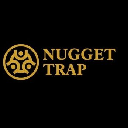-
 bitcoin
bitcoin $114684.631706 USD
-0.87% -
 ethereum
ethereum $4228.677447 USD
1.58% -
 bnb
bnb $1294.880693 USD
-1.16% -
 tether
tether $1.000819 USD
-0.02% -
 xrp
xrp $2.605138 USD
2.79% -
 solana
solana $209.908690 USD
5.89% -
 usd-coin
usd-coin $0.999903 USD
-0.03% -
 dogecoin
dogecoin $0.213423 USD
2.93% -
 tron
tron $0.322721 USD
-0.10% -
 cardano
cardano $0.727247 USD
3.66% -
 hyperliquid
hyperliquid $42.339456 USD
6.05% -
 chainlink
chainlink $19.910811 USD
5.16% -
 ethena-usde
ethena-usde $1.000557 USD
0.00% -
 stellar
stellar $0.349734 USD
2.69% -
 bitcoin-cash
bitcoin-cash $543.848687 USD
-0.21%
What is Kaspa (KAS) mining?
Kaspa mining uses the GhostDAG protocol for fast, efficient block validation and rewards miners with KAS tokens.
Jul 18, 2025 at 05:00 pm
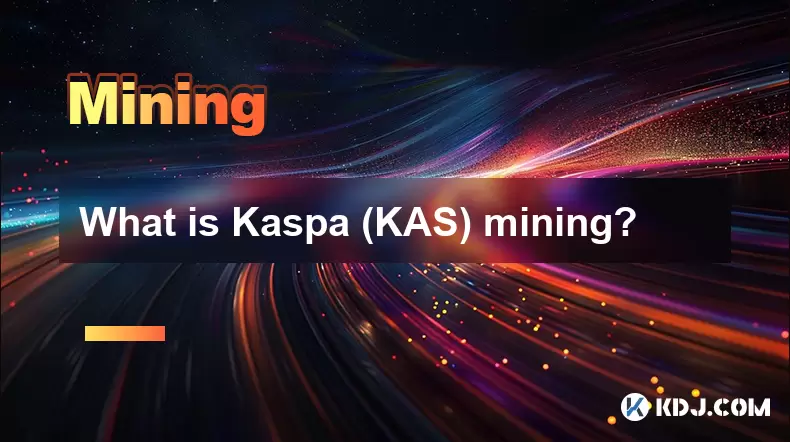
Understanding the Basics of Kaspa (KAS) Mining
Kaspa (KAS) mining refers to the process through which new KAS coins are generated and transactions are verified on the Kaspa blockchain. Unlike traditional Proof-of-Work (PoW) blockchains like Bitcoin, Kaspa introduces a novel consensus mechanism known as GhostDAG, which allows for high throughput and fast transaction confirmations. This architecture makes Kaspa unique in the cryptocurrency space and has significant implications for how mining is conducted.
Mining in the Kaspa network involves solving complex cryptographic puzzles using computational power. Miners compete to find valid solutions, and the first one to do so gets the right to add a new block to the blockchain and receive the associated block reward in KAS tokens. The efficiency and speed of block propagation in GhostDAG enable miners to work simultaneously on multiple blocks without wasting resources on orphaned chains.
GhostDAG is crucial to understanding why Kaspa mining differs from other PoW systems.
How Kaspa Mining Differs from Traditional Mining
In most PoW-based cryptocurrencies like Bitcoin or Ethereum Classic, only one block can be added at each height, which results in many mined blocks being discarded—referred to as orphaned blocks. In contrast, Kaspa’s GhostDAG protocol allows multiple blocks to coexist at the same height, all contributing to the final chain. This structure reduces inefficiencies caused by network latency and enables higher block rates without compromising security.
Miners on the Kaspa network don’t lose rewards due to network delays because their contributions are still recognized even if they aren't the first to broadcast a solution. This feature significantly improves mining decentralization and fairness, making it more accessible to individual miners rather than just large pools.
Higher block frequency in Kaspa leads to faster confirmations and improved scalability.
Hardware Requirements for Kaspa Mining
Kaspa uses the kHeavyHash algorithm, which is designed to be ASIC-friendly but also somewhat GPU-friendly. While ASICs offer superior performance and energy efficiency, GPUs can still participate in mining, especially during the early stages of the network when adoption is growing.
To begin mining KAS:
- You’ll need a GPU with at least 4GB VRAM, though 6GB or more is recommended.
- Alternatively, you can use ASIC miners optimized for kHeavyHash.
- A stable internet connection and sufficient cooling are essential to maintain hardware longevity.
There are several mining software options available, such as kamd and lolMiner, both of which support Kaspa mining. It's important to choose software that is actively maintained and compatible with your hardware setup.
Selecting the right mining hardware directly affects profitability and operational costs.
Setting Up a Kaspa Mining Rig
To set up a basic Kaspa mining rig, follow these steps:
- Choose a suitable mining operating system, such as RaveOS, SimpleMining OS, or a custom Linux distribution.
- Install the required drivers for your GPU.
- Download and configure Kaspa-compatible mining software.
- Connect to a mining pool or mine solo, depending on your preference and hash rate.
- Configure wallet addresses to receive mining rewards.
If you're joining a mining pool, ensure you input the correct server address, port, worker name, and password. Most pools provide detailed instructions on how to connect using different mining software.
Proper configuration of mining software ensures optimal performance and connectivity.
Choosing a Wallet and Mining Pool
Before starting to mine, you'll need a wallet to store your KAS tokens. There are several wallet options available, including web wallets, desktop wallets, and hardware wallets. Popular choices include the official Kaspa wallet, Electrum-style wallets, and third-party services like Kaspacoin Wallet or Guarda.
For mining pools, consider factors such as pool fees, uptime reliability, and geographic location. Some popular Kaspa mining pools include:
- KaspaPool
- Kaspa Brasil
- Kaspa China
- Kaspa EU
Each pool offers different features, such as real-time statistics, low minimum payouts, and support for merged mining. Merged mining allows miners to simultaneously mine multiple cryptocurrencies that share the same hashing algorithm without additional resource consumption.
Selecting a reliable mining pool enhances reward consistency and reduces downtime.
Frequently Asked Questions (FAQ)
Q: Can I mine Kaspa using my CPU?A: While technically possible, CPU mining for Kaspa is not efficient compared to GPU or ASIC mining due to the kHeavyHash algorithm's memory-intensive nature.
Q: Is Kaspa mining profitable for small-scale miners?A: Profitability depends on electricity costs, hardware efficiency, and current KAS token prices. Due to lower entry barriers and reduced orphan rates, small-scale miners have a better chance of earning consistent rewards compared to traditional PoW networks.
Q: What is merged mining in the context of Kaspa?A: Merged mining allows miners to contribute hash power to multiple blockchains simultaneously, provided they share the same consensus algorithm. Several altcoins support merged mining with Kaspa, enabling increased revenue without extra effort.
Q: How often are blocks mined on the Kaspa network?A: Kaspa targets a block time of around 1 second, allowing for extremely fast transaction confirmations while maintaining security through its GhostDAG protocol.
Disclaimer:info@kdj.com
The information provided is not trading advice. kdj.com does not assume any responsibility for any investments made based on the information provided in this article. Cryptocurrencies are highly volatile and it is highly recommended that you invest with caution after thorough research!
If you believe that the content used on this website infringes your copyright, please contact us immediately (info@kdj.com) and we will delete it promptly.
- XRP Price Prediction: Weekend Rollercoaster or Rally?
- 2025-10-12 08:45:16
- Bittensor (TAO): Super Bullish Signals Point to Potential 2x Rally
- 2025-10-11 10:25:12
- Silver Price Correction: Navigating the Dip & Identifying Key SEO Keywords
- 2025-10-11 10:25:12
- Decoding Crypto Trends: Bittensor's Bull Run, Cardano's Dip, and LivLive's Presale Buzz in 'Uptober 2025'
- 2025-10-12 08:45:16
- MoonBull: The Crypto Meme Coin Promising 1000x Gains?
- 2025-10-11 10:30:01
- Crypto Payroll Revolution: Stablecoins, Altcoins, and the Future of Salary Payments
- 2025-10-11 10:30:01
Related knowledge
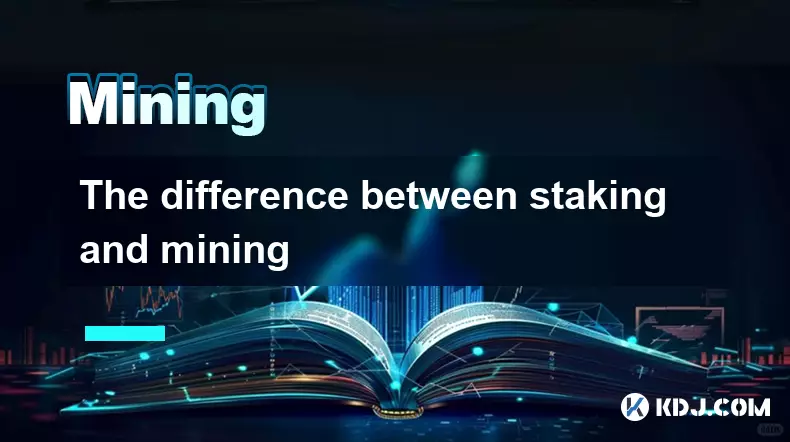
The difference between staking and mining
Sep 24,2025 at 05:18am
Understanding Staking in the Cryptocurrency Ecosystem1. Staking involves holding funds in a cryptocurrency wallet to support the operations of a block...
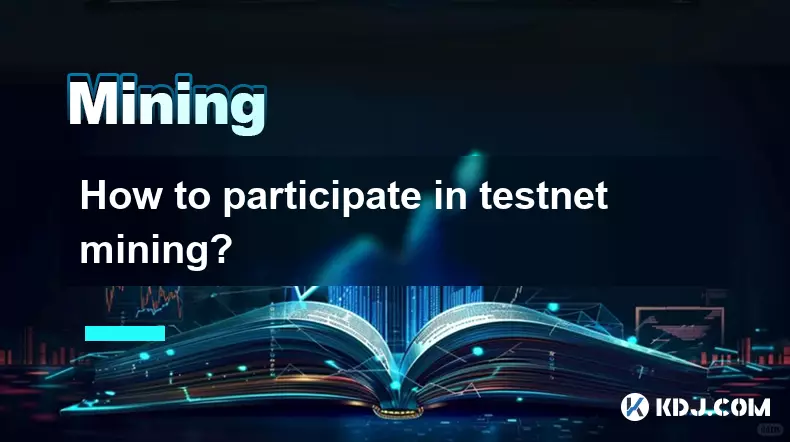
How to participate in testnet mining?
Sep 22,2025 at 09:18am
Understanding Testnet Mining in the Crypto Ecosystem1. Testnet mining is a method used by blockchain developers to simulate real-world conditions on a...

How to dispose of abandoned mining machines?
Sep 19,2025 at 08:19pm
Assessing the Condition of Abandoned Mining Rigs1. Begin by inspecting each mining machine for visible damage, corrosion, or missing components. Machi...

How to identify high-quality mining pools?
Sep 21,2025 at 03:19pm
Reputation and Track Record1. A mining pool’s reputation is built over time through consistent performance and transparency. Pools that have operated ...
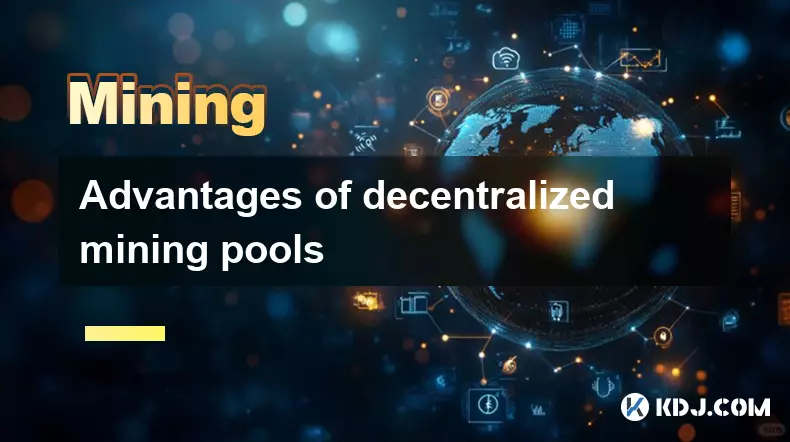
Advantages of decentralized mining pools
Sep 20,2025 at 04:36pm
Enhanced Security and Resistance to Censorship1. Decentralized mining pools operate on blockchain-based smart contracts, eliminating the need for a ce...
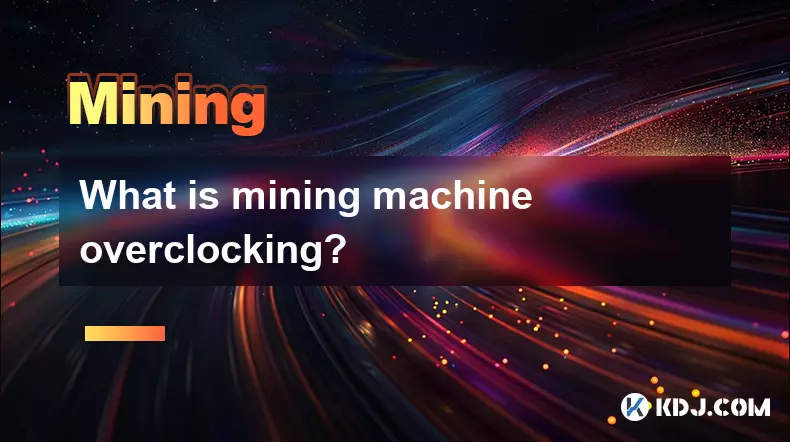
What is mining machine overclocking?
Sep 21,2025 at 07:19pm
Understanding Mining Machine Overclocking1. Mining machine overclocking refers to the process of increasing the operating frequency of a cryptocurrenc...

The difference between staking and mining
Sep 24,2025 at 05:18am
Understanding Staking in the Cryptocurrency Ecosystem1. Staking involves holding funds in a cryptocurrency wallet to support the operations of a block...

How to participate in testnet mining?
Sep 22,2025 at 09:18am
Understanding Testnet Mining in the Crypto Ecosystem1. Testnet mining is a method used by blockchain developers to simulate real-world conditions on a...

How to dispose of abandoned mining machines?
Sep 19,2025 at 08:19pm
Assessing the Condition of Abandoned Mining Rigs1. Begin by inspecting each mining machine for visible damage, corrosion, or missing components. Machi...

How to identify high-quality mining pools?
Sep 21,2025 at 03:19pm
Reputation and Track Record1. A mining pool’s reputation is built over time through consistent performance and transparency. Pools that have operated ...

Advantages of decentralized mining pools
Sep 20,2025 at 04:36pm
Enhanced Security and Resistance to Censorship1. Decentralized mining pools operate on blockchain-based smart contracts, eliminating the need for a ce...

What is mining machine overclocking?
Sep 21,2025 at 07:19pm
Understanding Mining Machine Overclocking1. Mining machine overclocking refers to the process of increasing the operating frequency of a cryptocurrenc...
See all articles
















